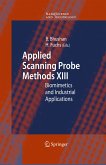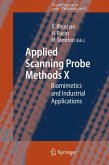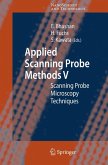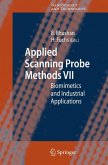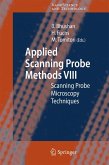Dieser Download kann aus rechtlichen Gründen nur mit Rechnungsadresse in A, B, BG, CY, CZ, D, DK, EW, E, FIN, F, GR, HR, H, IRL, I, LT, L, LR, M, NL, PL, P, R, S, SLO, SK ausgeliefert werden.
"Vol. XII contains nine contributions ... of SPM applications on a variety of systems including biological systems for the measurement of receptor-ligand interaction, the imaging of chemical groups on living cells, and the imaging of chemical groups on live cells. These biological applications are complemented by nearfield optical microscopy in life science ... . Each chapter ... will make profitable reading for researchers at all experience levels. ... All the chapters are ... beautifully illustrated and in color too, also along with graphs, equations etc." (Current Engineering Practice, 2009)
"The articles ... are written in sufficient detail, so that university students, researchers and engineers can understand the physics of the instruments, the design and construction of the devices and the cantilevers, the signal processing algorithms, and their use in imaging and the surface characterization of the specimens. ... highlight various studies, techniques and applications that permit us to image, modify, fabricate and control structures at the molecular and atomic level. ... well-written and clearly illustrated." (Barry R. Masters, Optics & Photonics News, September, 2009)




